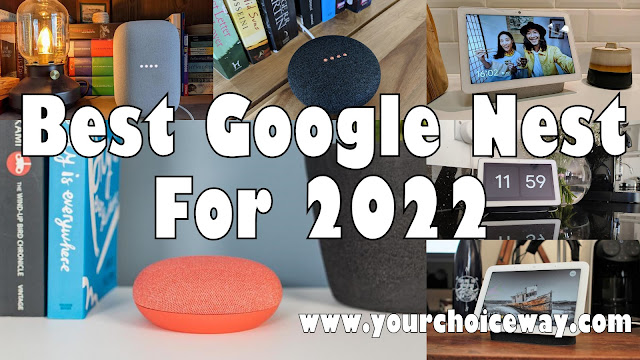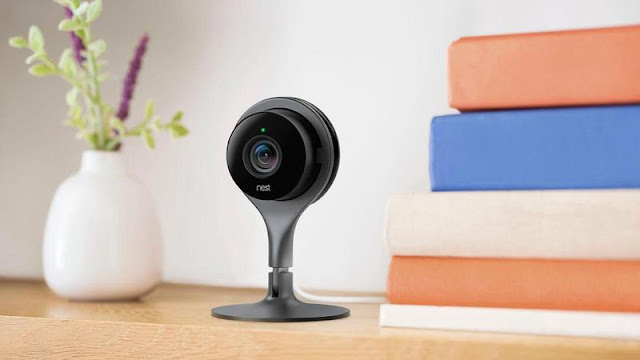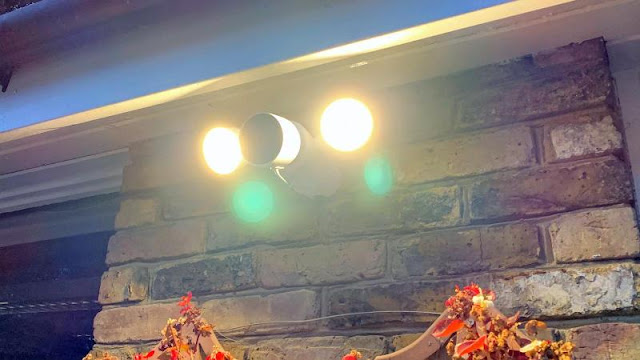The Pixel 5 is a compact 5G phone designed to show off what Android 11 has to offer while also righting the wrongs of the Pixel 4 line.
Should I Buy The Google Pixel 5?
Pros
- Compact, clean, lightweight design
- Outstanding camera features
- Superb user experience
Cons
- Lacklustre loudspeaker
- Finish scratches easily
- Slow 'fast' charging
Our Verdict
- The Pixel 5 doesn't pretend to compete with the most powerful phones on the market, because it doesn't have to. It's perhaps the most balanced Android phone to date, not to mention a great choice for those after a capable small phone, 5G phone or camera phone.
Price When Reviewed
- $699
Hot on the heels of the Pixel 4a, Google has expanded its 2020 mobile portfolio yet further to now include the Pixel 4a 5G and the long-rumoured Google Pixel 5.
On the surface, the Pixel 5 serves to right the wrongs made by last year’s erroneous Pixel 4; namely by dropping the experimental Motion Sense gesture tech, trading its secondary telephoto camera in for an ultrawide sensor and almost doubling battery capacity so that the phone actually lasts beyond a few hours at a time.
Related: Google Pixel 4a review
While these changes may seem obvious, the Pixel 5 - and where it sits in the wider smartphone landscape - is indicative of a shift in Google’s smartphone strategy and points to a very different future to the one that older Pixel phones were designed for.
Design & build
The most striking thing about the Pixel 5 isn't its camera tech or how well the Google Assistant is integrated into its software experience, it's its design and that's thanks to two main factors: its size and its finish.
It's fair to say that there just haven't really been any good small Android phones in recent years, with a few exceptions that barely scrape by. Most manufacturers have pushed for bigger displays in order to show off their multimedia capabilities but in most cases, that's been at the expense of portability, weight, ease-of-use and comfort in the hand.
The Pixel 5, with its 6in display, definitely cements its place on our Best Small Phones list (ousting the ageing Pixel 3) because of its diminutive footprint, paired with a comfortable hand feel that's wholly unique to this device.
It sports a beautifully balanced design, being the only phone with what appears to be equally-sized bezels along all four edges of the screen (most usually sport a thicker bottom bezel).
The move away for the Motion Sense radar array of last year's Pixels, plus the use of an in-display hole-punch front camera (a trend Google first adopted with the Pixel 4a), is why the bezels of the Pixel 5 are so much thinner; and then there's the rounding.
It's a small detail but both the body and the display of the Pixel sport rounded corners that share proportionally complimentary radii; something you might overlook on paper but in reality taps into that part of your (are at least my) subconscious that's appeased by the visually congruent.
It brings a pleasing balance to the look of the Pixel 5 that's also supported by its relatively thin 8mm waistline, rounded sides and impressively low weight (just 151 grams).
The Pixel 5 is an enigma in this regard, as, along with signal performance, wireless charging is one key reason you don't want to use a metal back and yet the Google has clad the 5's internals in recycled aluminium, whilst also retaining support for wireless charging. How has it achieved this feat? Simple, it cut a hole in it.
It's very hard to perceive but in the right light, you can actually see the shield-shaped cut-out Google has sliced out of the phone's aluminium frame to allow the wireless charging coil to function. The Pixel 5 is covered in what it describes as a "bio-resin" which gives the impression of a continuous unibody and the overall effect is wholly convincing; with the Pixel 5 presenting itself as a clean, well-built device.
| Google Pixel 5 (left), Google Pixel 4 XL (right) |
This year, potential buyers only have two colour options to choose between: Just Black or Sorta Sage - a muted pale green that serves as a notable contrast to last year's Clearly White and Oh So Orange colourways. Google says this year's choice of just two finishes comes as a direct result of supply chain limitations in the face of the global pandemic.
The colour-accented power button has also been replaced with a chromed button (along with a chromed 'G' logo on the lower half of the phone's back) which Google says helps differentiate the more premium Pixel 5 from the Pixel 4a (5G) that it was announced alongside (which features a white power key).
The finishing touches that round out the Pixel 5's design are its pleasingly small camera bump, the return of a centrally-positioned rear fingerprint sensor - which is undoubtedly more responsive and convenient than the Pixel 4's face unlock or in-display fingerprint sensors (both optical and ultrasonic) - and IP68 dust and water resistance.
Display & Audio
A taller, slimmer 19.5:9 aspect ratio means the Pixel 5 offers a larger 6in display compared to last year's Pixel 4, without becoming that much wider in-hand.
Google hasn't pushed the boat out with the panel on this year's Pixel but it's still a pleasingly crisp and clear HDR10+-compliant, 90Hz, Full HD+, OLED offering.
That adaptive higher refresh rate is enabled by default and although technically consumes more battery life than locking the phone down to 60Hz, gives you a far more responsive and premium-feeling user experience as a result, so it's best left on.
Maximum brightness could be a touch higher but generally-speaking, there's little that detracts from the visual experience on the Pixel 5; with pleasing colours, contrast and viewing angles at play.
You have the option to change between Natural and Boosted colour profiles or opt for Adaptive mode, which is enabled by default (I never felt the need to change it), while Night Light will warm up the screen colour temperature in the evenings to help reduce eye strain.
As for the Pixel 5's audio chops, a headphone jack doesn't feature and there's no in-box 3.5mm adapter or USB headphones, so you're left either forking out extra for Bluetooth headphone or sourcing your own USB-C to 3.5mm adapter (Google, no doubt, hopes that you choose to pick up a pair of its latest Pixel Buds [£179] or its own-brand adapter [£12]). If that is an important consideration for you, the Pixel 4a (5G) does feature a headphone jack.
With no visible earpiece it was assumed that the Pixel 5 would host an under-display speaker and sure enough, it works well in calls but doesn't bring much to the table when serving as a loud-speaker. It handles the higher frequencies while a downward-facing secondary speaker does most of the heavy lifting regarding the mids and bass tones.
That said, despite the promise of stereo sound and the frequency split across both speakers, the overall sound profile lacks punch or clarity, especially the louder you push it.
Software & Features
There was never any doubt about the software experience that the Pixel 5 would be running out-the-box. Android 11 is the latest and greatest of Google's mobile OS' and as ever, this newest Pixel serves to show it off at its best.
This mainly takes the form of iterative improvements across a number of established features, with apps like Google Duo and Google's Recorder getting some additional functionality (the latter now lets you edit audio recordings and auto-transcriptions by highlighting each one to affect the other - it's pretty impressive in practice).
Hold For Me - the Google Duplex-powered automated call holding feature - sounds promisingly helpful on paper but isn't available at launch and if you're outside the US, won't be coming to your Pixel phone for the foreseeable, which is a real shame.
It's really the small tweaks the elevate the software experience on the Pixel 5; the ability to both screenshot or grab on-screen information in a context-aware format with a simple swipe up, support for Live Captions (introduced last year) and the improved wallpaper and home screen customisation tools.
None of this is groundbreaking stuff but Google has managed to both add and improve features without leaving the resultant software experience feeling bloated. That's before you fold in the promise of three years of both security and OS updates, as well as a handful of camera and battery-related additions that we'll come to in a moment.
Camera
The Pixel line has grown to represent the power of computational photography on smartphones and as the years have gone on, that fact has only solidified further.
The Pixel 5's primary 12.2Mp (Sony IMX363) sensor is the same unit used by the Pixel 4 series and even the Pixel 3 series before that; it's a decidedly ageing component that's remained in high regard, only because of what Google's engineers have been able to achieve on the software and image processing side.
This year, it's accompanied by a 16Mp ultrawide sensor, which sports a 107° field-of-view; not as wide as its competitors (the iPhone 12's ultrawide sensor sports a 120° FoV, for example) but still a great way to gain a new perspective on a subject or fit more in-frame without having to move position.
There's also the addition of virtual portrait lighting, a multitude of new specialised video stabilisation options and the ability to top out at 4K 60fps recording (up from 4K 30fps on the Pixel 4). And all this while Google has seemingly dropped the use of a dedicated chip, like its predecessors' Pixel Visual Core and Pixel Neural Core.
In side-by-side testing, the Pixel 5 was able to capture and process Portrait shots as quickly as, or faster than last year's Pixel 4, so it looks as though Google's confidence in this move seems valid.
As for picture quality, you're getting a very similar result to last year's Pixels. Crop in and you'll see some variation in sharpness, dynamic range and colour science - with the Pixel 5's images being sharper, dynamically wider and a fraction cooler in those three regards - but the different decisions the camera is making over last year's Pixel are both extremely subtle and more a matter of personal preference, rather than an empirical improvement.
Video quality does seem improved, namely thanks to the option of that higher frame rate, as well as different stabilisation for different use cases. It's definitely worth familiarising yourself with these modes ahead of time though, as they all treat footage differently and most importantly, crop in on the frame to a different degree; depending on what type of content the phone thinks you're going to capture.
Standard stabilisation is on by default and seems wholly capable if you're simply walking down the street or panning around from a fixed spot. Locked is great for a zoomed, tripod-style fixed position shot, while hand-held, although the crop is quite heavy (starting at 2x).
Active is the Pixel's attempt at GoPro-style stabilisation and while useful, still lets in noticeable judder depending on the motion the phone is trying to counteract. Cinematic Pan is the most creative but also the most specialised - trimming out audio and slowing footage down to half speed while helping you capture a super-smooth horizontal pan whilst shooting handheld.
You can also disable image stabilisation (although there's no real need) although it's clear that this only really kills the EIS (electronic image stabilisation), while the main camera's OIS (optical image stabilisation) remains on.
HDR processing has also been improved and the feature-set expanded upon, along with a richer post-capture editing suite, but the other stand-out feature is virtual portrait lighting, which lets you add a virtual light against your subject's face that you can drag around on-screen, change intensity or have the phone automatically place and adjust.
While the feature isn't new to smartphones in general, the Pixel 5 has one of the most impressively reliable and easy-to-use implementations of such functionality.
Performance
The Pixel line has always been about a software and user experience that outshine - and aren't explicitly limited by - the hardware that supports them. This is most evident in the phone line's camera technology but with the Pixel 5 it's also true of the processor running the show.
Google has always stuck Qualcomm's flagship chip into its mainline Pixel phones but near the end of said chip's time in the spotlight. This was originally because a successor was always scheduled to be announced by Qualcomm only a month or so later, or in more recent years, because Qualcomm started to push out superior mid-lifecycle revisions, such as in the case of the Snapdragon 855+ and 865+.
This year, Google is taking a different tack altogether, dropping from Qualcomm's flagship-tier Snapdragon 800 series down to its 700 series chips instead.
Admittedly, the Snapdragon 765G that powers the Pixel 5 is the best that the 700 series has to offer and holds an advantage over the current 800 series when it comes to one of the phone's key selling points - 5G.
The 765G sports an integrated 5G modem, while the 865 still relies on a standalone unit. This means greater power efficiency but the 765G has also proven to be a superb processor in its own right, regardless of its standing in Qualcomm's portfolio. It's the same chip found in top-notch phones like the Nokia 8.3 5G, Vivo X50 Pro and OnePlus Nord.
In real-world use, the Pixel 5 handles as you'd expect any flagship phone to and paired with the lightweight Android 11 software and 8GB of RAM (the most of any Pixel so far), makes for one of the cleanest and most responsive user experiences on the market, right now.
Oddly, by comparison, it benchmarks relatively poorly to comparable devices, so poorly in fact something seems amiss. The numbers produced by our performance-focused benchmarks don't reflect the real-world performance that the phone clearly delivers and tests from other Android 11-based phones also show notably lower scores than Android 10-toting devices powered by similar hardware.
As such, we've concluded that either the benchmarking apps or Android 11 require better optimisation. The original point still stands, however, the Pixel 5 delivers superb real-world performance and is as well-suit to gaming as it is multi-tasking or photography.
Battery
The Pixel 4 was a promising Android phone undone by some of the worst battery life in recent memory. It was an issue fundamentally caused by the small 2800mAh cell that the phone used and it was at the top of our wishlist of improvements that the Pixel 5 needed to make.
Thankfully, Google looks to have listened and while the bump in battery capacity isn't transformative, it turns the Pixel 5 into a phone that you'd be happy to live with, rather than one that you'd be scared to use for fear of it dying the moment the screen lights up.
| Extreme Battery Saver is useful in a pinch |
In battery benchmark tests the Pixel 5 delivers promising numbers, lasting 12.5 hours under artificial conditions. In real-world use, the phone proves to be far more pedestrian, with a somewhat unexciting average of 5 hours of screen-on time per charge. However, this works out to a day's use without worry and with the bar as low as it was, that's all Google really needed to hit. It's no battery champ, though.
Android 11 on the Pixel 5 does also introduce the Extreme Battery Saver feature (coming to older Pixel devices in future), which if enabled locks down app access to the phone's base functions, save for any apps you whitelist.
Google proudly promises up to 48 hours of use using this mode, but that's something other phones are capable of during normal use, so wouldn't be the first thing we shout about when recommending the Pixel 5.
Price & Availability
The Google Pixel 5 costs £599/$699 and is available to buy direct from Google. It's also available from the likes of Amazon, John Lewis and Currys in the UK, along with US retailers like Best Buy and B&H.
Verdict
The Google Pixel 5 sheds some of the series' more experimental features to deliver a more focused smartphone experience that exemplifies some of the best qualities of Android as a platform.
The hardware isn't competitive to the same degree as offerings from the likes of Oppo, OnePlus or Realme but that doesn't stop the Pixel 5 from being greater than the sum of its parts.
This device is a reliable all-rounder, a great long-term purchase - both in terms of software support and based on the fact that 5G infrastructure continues to improve - a superb small Android phone and an outstanding camera phone to boot.
Google's finally realised that the Pixel can't compete with the everything-but-the-kitchen-sink approach of some top-tier smartphones, but also that it doesn't have to. The Pixel 5 is perhaps the most balanced Android smartphone on the market and if you related to any of the use cases I just mentioned, then this is definitely worth considering, even if rivals offer more for less.
Specs
- 6in 19.5:9 90Hz Full HD+ (2340x1080) OLED display
- Qualcomm Snapdragon 765G processor
- 8GB RAM
- 128GB storage (non-expandable)
- 12.2Mp main camera w/ OIS+EIS
- 16Mp ultrawide camera w/ 107° FoV
- 8Mp hole-punch front-facing camera
- Stereo speakers
- Recycled aluminium body
- Corning Gorilla Glass 6
- IP68-certified
- Android 11
- 4080mAh battery
- 18W fast charging
- 12W fast wireless charging + reverse wireless charging
- 151 grams
- 144.7mm x 70.4mm x 8mm
- Colours: Just Black, Sorta Sage












0 comments:
Post a Comment